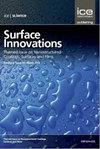超临界二氧化碳剥离的石墨纳米片用于高性能铝离子电池阴极
IF 2.7
4区 材料科学
Q3 CHEMISTRY, PHYSICAL
引用次数: 0
摘要
使用商用石墨作为阴极的铝离子电池(AIBs)是一种很有前途的二次能量存储设备,可用于工业领域。虽然将石墨剥离成石墨纳米片具有显著提高铝离子电池性能的巨大理论潜力,但传统的氧化还原策略存在引入缺陷和官能团的缺点。在这项工作中,首次探索了将超临界二氧化碳剥离的石墨纳米片用于高性能铝离子电池阴极。电化学测试表明,在电流密度为 4 A g-1 时,GNS-20 用于 AIB 阴极的比容量为 152 mAh g-1,是天然石墨(NG)的 1.9 倍,是富缺陷还原氧化石墨烯(rGO)的 1.47 倍。此外,事实证明,调节 GNS-20 的层间孔隙结构有助于提高其 AIB 性能。通过调整剥离压力来调节石墨纳米片的孔隙率效果显著。剥离压力为 20 兆帕时,纳米石墨片的孔隙率为 86.7%。15 兆帕时的孔隙率为 71.5%,10 兆帕时为 69.7%,对应的容量分别为 117 mAh g-1 和 99 mAh g-1(4 A g-1)。这种方法简化了工艺,符合环保原则,为各种石墨纳米片的应用提供了巨大潜力。本文章由计算机程序翻译,如有差异,请以英文原文为准。
Graphite nanosheets exfoliated by supercritical carbon dioxide for high-performance aluminum-ion battery cathodes
Aluminum-ion batteries (AIBs), using commercial graphite as cathodes, stand out as promising secondary energy storage devices for industrial application. While exfoliating graphite to graphite nanosheets holds substantial theoretical potential for significantly enhancing AIBs battery performance, traditional redox strategies have the drawback of introducing defects and functional groups. In this work, graphite nanosheets exfoliated by supercritical carbon dioxide for high-performance aluminum-ion battery cathodes exfoliated by supercritical carbon dioxide (GNS-20) was firstly explored for AIB cathodes. Electrochemical tests show that the specific capacity of GNS-20 for AIB cathode was 152 mAh g−1 at a current density of 4 A g−1 during 1000 cycles, which was 1.9 times higher than that of natural graphite (NG) and 1.47 times higher than that of defect-rich reduced graphene oxide (rGO). Further, the regulation of the interlayer pore structure of GNS-20 proved instrumental in enhancing its AIB performance. Modulating the porosity of graphite nanosheets by adjusting the exfoliation pressure had a significant impact. The porosity of graphite nanosheets at an exfoliation pressure of 20 MPa was 86.7%. While the porosity at 15 MPa was 71.5% and 69.7% at 10 MPa, corresponding to capacities of 117 and 99 mAh g−1 (4 A g−1), respectively. This approach simplifies the process and aligns with environmental principles, offering significant potential for various graphite nanosheets applications.
求助全文
通过发布文献求助,成功后即可免费获取论文全文。
去求助
来源期刊

Surface Innovations
CHEMISTRY, PHYSICALMATERIALS SCIENCE, COAT-MATERIALS SCIENCE, COATINGS & FILMS
CiteScore
5.80
自引率
22.90%
发文量
66
期刊介绍:
The material innovations on surfaces, combined with understanding and manipulation of physics and chemistry of functional surfaces and coatings, have exploded in the past decade at an incredibly rapid pace.
Superhydrophobicity, superhydrophlicity, self-cleaning, self-healing, anti-fouling, anti-bacterial, etc., have become important fundamental topics of surface science research community driven by curiosity of physics, chemistry, and biology of interaction phenomenon at surfaces and their enormous potential in practical applications. Materials having controlled-functionality surfaces and coatings are important to the manufacturing of new products for environmental control, liquid manipulation, nanotechnological advances, biomedical engineering, pharmacy, biotechnology, and many others, and are part of the most promising technological innovations of the twenty-first century.
 求助内容:
求助内容: 应助结果提醒方式:
应助结果提醒方式:


